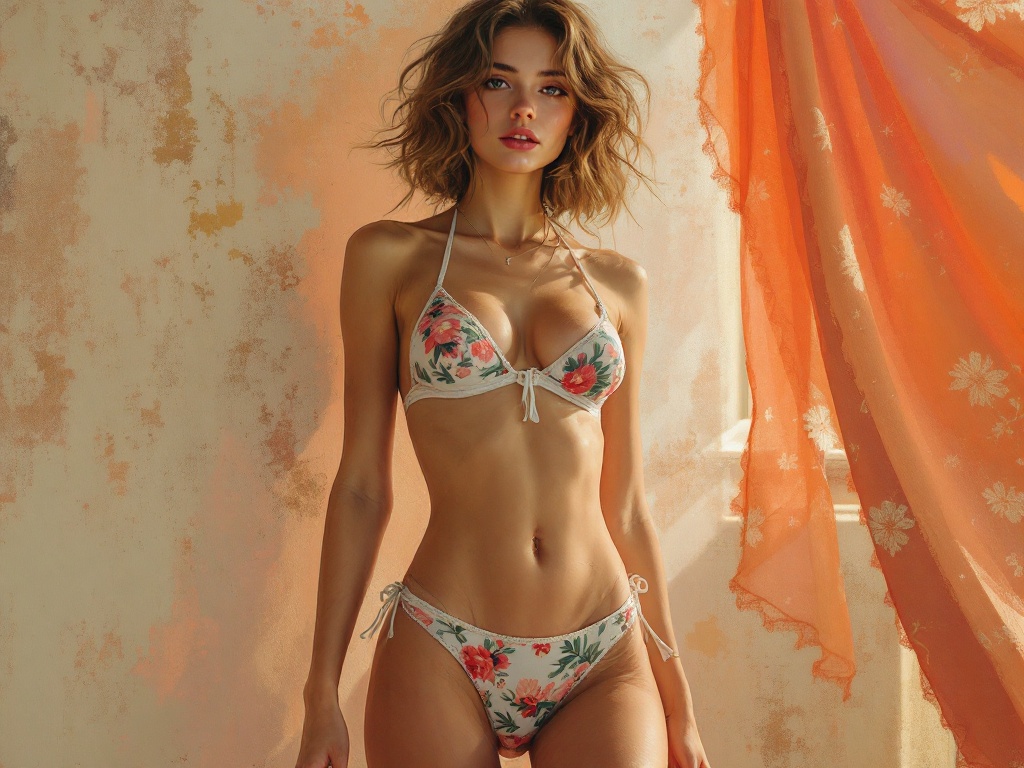In today’s digital age, technology influences nearly every aspect of our lives, and erotic photography is no exception. Recently, a groundbreaking innovation has emerged, significantly transforming this intimate genre—Deep Nude technology. This artificial intelligence-driven process enables the creation of photorealistic nude images from clothed originals, a feat that stirs both excitement and trepidation. As the boundaries of creative expression expand, these advancements raise critical questions about ethics, consent, and the portrayal of the human body. To truly appreciate the implications of Deep Nude technology, one must delve into its intricacies, understand its historical context, and consider the future it heralds.
The evolution of erotic photography has mirrored societal developments in numerous ways. From the classic nude paintings of the Renaissance to the provocative imagery of modern-day media, this art form has continually adapted to new cultural norms. With the advent of digital photography, the ability to create, share, and consume erotic content has become more accessible than ever. The introduction of artificial intelligence tools like Deep Nude technology marks another paradigm shift, pushing the limits of how we view and engage with erotic imagery. This duality of creation and moral responsibility will shape the conversation surrounding Deep Nude going forward.
The Evolution of Erotic Photography

Understanding the context in which Deep Nude technology operates requires a glimpse into the past. Historical milestones in erotic photography have laid the foundation for contemporary practices, shaped by ever-changing social norms. Early 20th-century photography often faced censorship and condemnation, yet it remained an essential medium for exploring human sexuality. The rise of adult magazines in the second half of the century afforded new opportunities for erotic expression, sparking both great creativity and controversy. Now, we stand on the threshold of another transformative chapter.
- 1920s-1930s: The emergence of photography as an art form encountered societal backlash.
- 1970s-1980s: The growth of adult magazines made erotic content more mainstream.
- 2000s: Digital technology democratized access, allowing for self-publishing and new forms of expression.
The rise of digital photography has become pivotal in the evolution of erotic photography, enabling both professionals and amateurs to capture and share their visions. It has also encouraged collaboration among different artists, pushing boundaries and melding styles. Now, with the introduction of Deep Nude technology, the capabilities of photographers have expanded dramatically. Utilizing advanced algorithms, this innovative tool allows creators to manipulate clothed images, revealing a nude version that appears authentic. This cutting-edge technique is not just a novel toy; it offers intriguing opportunities for artists while demanding a reexamination of ethics.
Understanding Deep Nude Technology

Deep Nude technology operates by employing sophisticated algorithms that analyze human features to render convincing nude likenesses from dressed subjects. Machine learning models are trained on large datasets, which provides them with the ability to produce realistic adaptations. However, the technical requirements for this technology are substantial, often necessitating significant computational power and expertise. While many see it as a tool for creative freedom, others raise concerns about the moral implications. As society grapples with the impact of such innovations, it becomes crucial to engage in ongoing discussions.
At its core, Deep Nude technology relies on neural networks that can interpret and reconstruct images. These models learn through a process known as deep learning, which enables them to recognize patterns and features in existing images. The outputs, however, raise critical questions about authenticity and consent. Many photographers and consumers must navigate the blurred lines between artistic expression and exploitation. When it comes to erotic photography, the stakes are even higher.
| Aspect | Implications |
|---|---|
| Creativity | Enhanced artistic expression and experimentation. |
| Ethics | Concerns regarding consent, privacy, and reality vs. representation. |
| Legality | Potential for misuse and need for regulation. |
Impacts on the Erotic Photography Landscape
The introduction of Deep Nude technology poses fascinating and challenging implications for the traditional erotic photography landscape. Photographers are now experiencing unprecedented creative opportunities, enabling them to explore new artistic avenues and enhance realism in their work. However, the creative freedom offered by this technology is not without risks. The ethical landscape becomes more complicated as artists grapple with issues of consent and the potential for misuse. As society engages with this technology, it will be essential to create processes that uphold ethical standards while permitting artistic innovation.
In addition to individual artists, consumers also play a significant role in shaping the discourse surrounding Deep Nude technology. With the democratization of erotic content, the lines between viewers and creators have blurred. Consumers are encouraged to engage critically with the content they encounter, reflecting on the implications of digitally altered imagery. As such, the responsibility for ethical consumption lies equally with artists and the audience. This evolving dynamic continues to shape the future of erotic photography and sets the stage for a dialogue on creativity, ethics, and representation.
Conclusion
Deep Nude technology serves as a double-edged sword in the realm of erotic photography, fostering innovation and creativity, while simultaneously prompting critical ethical dilemmas. As this technology evolves, its impact on the industry and society at large will become increasingly pronounced. Navigating this complex landscape will require thoughtful engagement from creators, consumers, and stakeholders alike. The balance of artistic freedom and ethical responsibility remains pivotal in ensuring that this new era of erotic photography is respectful and inclusive.
Frequently Asked Questions
- What is Deep Nude technology? Deep Nude technology is an AI-driven process that can manipulate images to generate realistic nude representations.
- How does Deep Nude technology impact artistic expression? It allows photographers to explore new creative avenues but also raises ethical issues regarding consent and representation.
- Are there risks associated with using Deep Nude technology? Yes, concerns include misuse for malicious purposes and the potential for violating privacy rights.
- Can Deep Nude technology be regulated? While regulation is challenging, ongoing discussions in legal and ethical domains aim to outline guidelines for its responsible use.
- What is the future outlook for erotic photography with this technology? The future may see a blend of artistic innovation and ethical oversight, transforming how erotic content is created and consumed.


